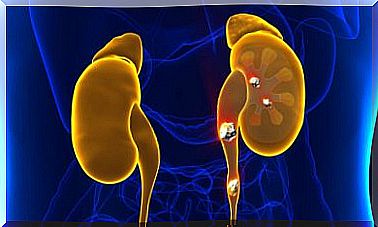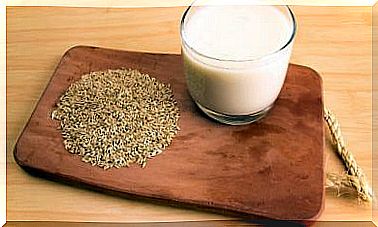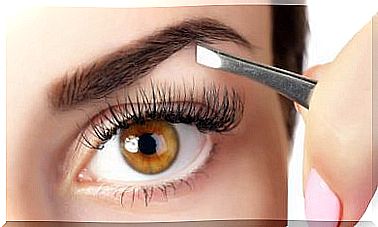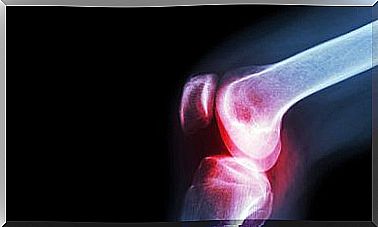Apitherapy Or Bee Therapy: What Is It And What Is It Used For?
In apitherapy or bee therapy, the toxin from these insects is used to treat various diseases. It is effective? Are there contraindications? In this space we detail it.
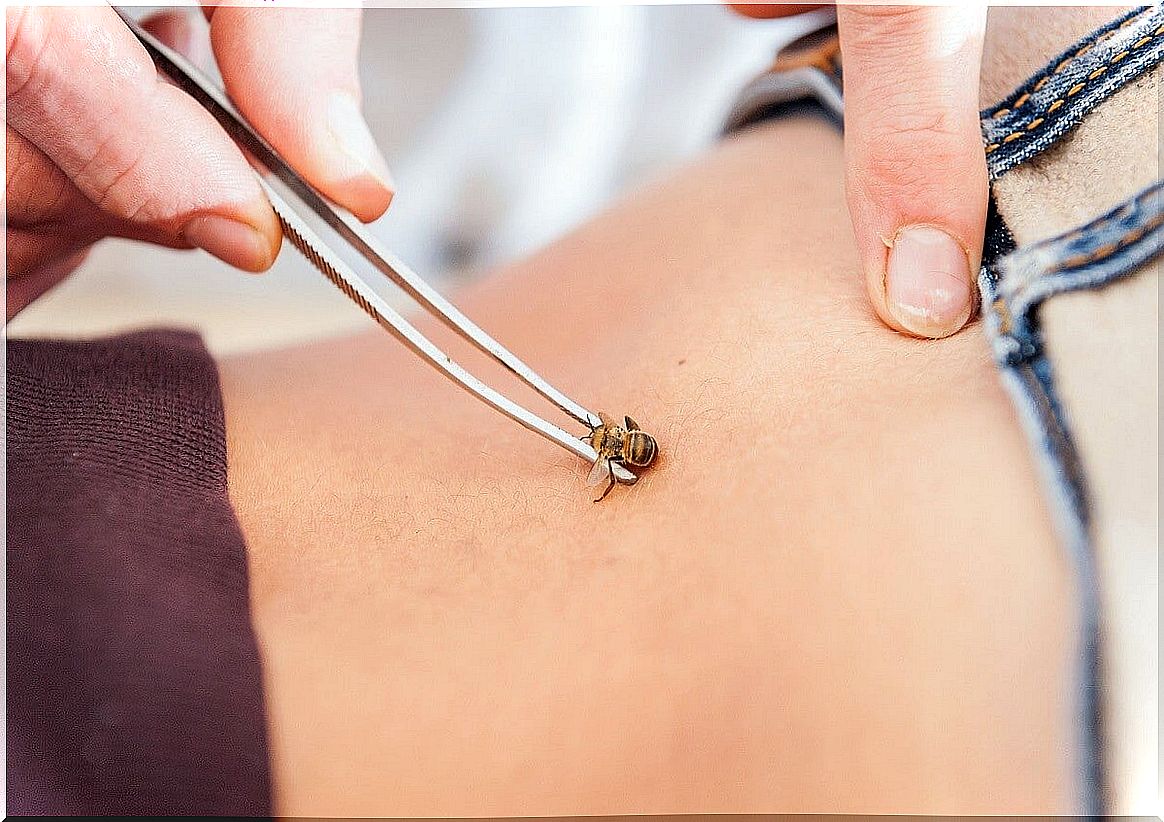
Humans have a very important relationship with bees, not only because of the role that this insect plays in nature, but also because of the use of its products, among which honey, wax, royal jelly, propolis and apitoxin, used in apitherapy.
The latter is an alternative treatment that has been practiced since the times of the Egyptian Empire, as well as in Ancient Greece and ancient China. According to its promoters, bee therapy provides multiple health benefits and, in fact, favors disease prevention.
Now, it is worth wondering if this therapy is supported by scientific research. In this article we will know the answer to this and other related questions. Continue reading!
What is bee venom like?
Although they are not aggressive insects by nature, bees have a way to defend themselves in case of potential aggression. In this sense, they have a stinger, which produces a painful prick. There is no doubt that a bee sting can be an unpleasant experience for anyone.
But it is not only the prick itself that the intruder suffers, but a poison called “apitoxin” is injected. It is composed of substances such as the following:
- Amino acids.
- Peptides
- Lipids
- Gucids.
- Hyaluronidase.
- Melitina.
- Phospholipase.
- Apamina.
- Other proteins.
In small animals, apitoxin can be fatal. However, in larger ones, including humans, the sting of a single bee may not affect it, unless the person is allergic.
Of course, when the dose is increased – that is, if there are many bee stings – this poison can have serious consequences. The tolerable toxin dose varies with the person. Between 100, 200 and 500 bees could cause death.
Even, according to an article published in the Medical Gazette of Mexico, the amount of venom in a bee is variable, as well as the proportion of the components. There are specimens that have 300 ug of apitoxin.
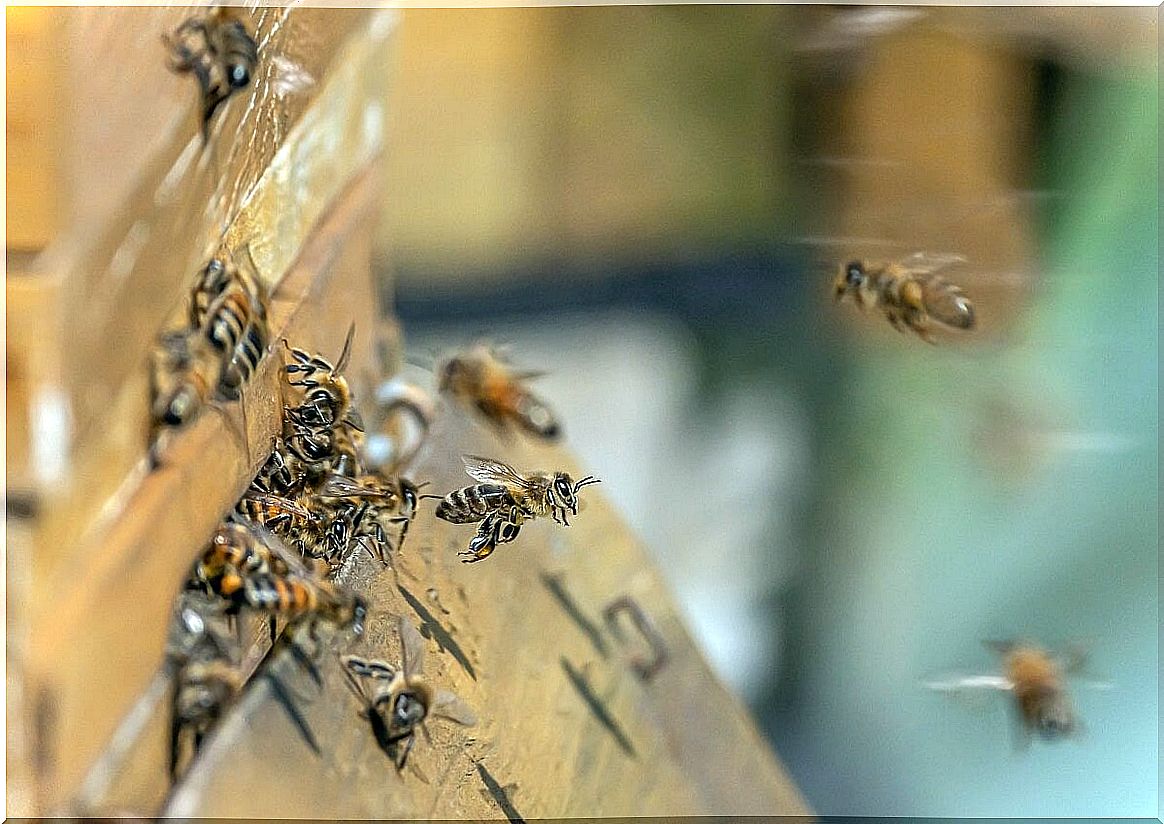
How is bee venom used?
Since ancient times, there has been talk of the effect of apitoxin on humans, especially in relation to chronic pain. Proponents of bee therapy state that because of this poison, Emperor Charlemagne was cured of gout.
Now, for medicinal use, beekeepers obtain the substance with a device that emits an electric shock. Stimulated bees sting on a glass, where the poison is deposited. Then it dries and turns into a powder.
Once extracted, the apitoxin is diluted for administration in various ways. In addition to its use in acupuncture, the venom can be injected or applied naturally, that is, by allowing bees to sting. Apitherapists prefer the latter. They suggest that direct bee sting is the best way to perform apitherapy for the most effective effect.
On the other hand, apitoxin is also found as an ingredient in creams and ointments, used to calm pain, take care of the skin, among others. However, its effectiveness remains a subject of controversy.
Possible benefits of apitherapy
In traditional medicine, apitherapy is used as an adjunct against the symptoms of some joint and muscle pathologies. Likewise, it is believed that it favors the improvement of patients with psoriasis, migraines, lumbagos and autoimmune disorders.
It is also used as an ally for mental health, since its application seems to reduce stress and anxiety. Does it have other uses? Yes. Its advocates suggest the following:
- It has antibacterial and antifungal properties.
- It is anti-inflammatory and analgesic.
- It can help people with hypertension due to its anticoagulant effect.
- Helps to improve metabolism and elimination of toxins.
But is there scientific evidence on this? For now, studies are limited. Let’s see below some research that has been done on apitherapy and diseases.
Arthritis
The use of bee venom to treat arthritis in animals and humans has been investigated. For example, in a study published in the Journal of Ethnopharmacolog and bee venom injected into rabbits was found to influence corticosteroid synthesis.
Because glucocorticoid hormones help regulate inflammation, apitoxin was shown to be effective in slowing the progression of arthritis in rabbits and rats.
A recent review suggests that there is evidence that bee venom may also be helpful in mitigating rheumatoid arthritis symptoms in humans. Despite this, the researchers found only one randomized control trial that tested its effectiveness against joint inflammation, tenderness and stiffness.
Psoriasis
In a clinical trial shared in the Journal of Dermatological Treatment , weekly injections of bee venom were administered to the skin lesions of 25 psoriasis patients. After 12 weeks, they showed a significant reduction in psoriasis plaques and inflammatory blood marker levels.
Pain treatment
The effectiveness of bee venom acupuncture for pain management has also been explored. In a Complementary Therapies in Medicine clinical study, 16 patients with central post-stroke pain were treated. The technique was applied twice a week, over three weeks. After this period, the participants reported reduced levels of pain.
Frozen shoulder
The use of bee venom acupuncture combined with physical therapy has been tested in treating people with frozen shoulder. According to the study results, patients who received apitherapy reported reduced levels of pain.
Although all these results look promising, they were done in small groups. Therefore, more research is needed in larger trials to confirm these results.

When should apitherapy be avoided?
Apitherapy is contraindicated in pregnant women and when the person suffers from certain diseases, such as those indicated below:
- Myocarditis, pericarditis, angina pectoris, atherosclerosis and various heart diseases.
- Diabetes.
- Cancer.
- Hepatitis.
- Venereal diseases.
- Renal insufficiency.
- Tuberculosis.
- Gastric and duodenal ulcer with a tendency to hemorrhage.
- Neoplasms
- Glaucoma.
- Hypertrophy of the prostate.
Possible risks of apitherapy
One of the reasons for not generalizing the use of apitherapy, and rather avoiding it, is that many people are sensitive to bee venom. There are no precise figures in this regard. However, it is estimated that it may be close to 2%.
In allergic patients, an application of apitoxin could trigger anaphylactic shock, which can put the person’s life at risk. Therefore, before any treatment, the interested party must undergo a test.
A person can die from the sting of bees or from receiving a high dose of apitoxin in a therapy, if the appropriate treatment is not administered in time. Do not forget that it is a poison.
On the other hand, some patients may experience secondary reactions to apitherapy. This includes the following:
- Pain.
- Dizziness
- Sleep disturbance.
- High blood pressure.
- Tachycardia.
- Feeling anxious
- Anguish.
In a case study, researchers found that there may be a link between a bee sting and the development of autoimmune diseases, such as lupus. It is also linked to liver damage, as noted in a World Journal of Hepatology report, released in 2011.
What should be clear about apitherapy?
Obviously, although it goes without saying, apitherapy must be applied by a professional, since it is based on the administration of a venom produced by the bee (apitoxin). If it is not done correctly, it can be dangerous to health, even in those cases in which it is not contraindicated.
There has already been a first death due to this technique. And while it may seem little, a death is still a tragedy and a cause for concern. There was also news of what happened to the renowned actor Gerard Butler, who suffered anaphylactic shock after receiving an injection with bee venom.
For these reasons, some medical professionals consider this procedure unsafe and inadvisable. In any case, the person interested in doing it must inform themselves about the risks and access the corresponding tests to know if they are sensitive to apitoxin. Similarly, those who apply therapy should know about first aid in the management of allergic reactions.

